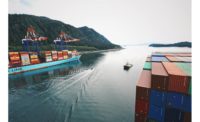Construction is set to begin this month on a 1,045-meter-long bridge over the Mackenzie River near Fort Providence in Canada’s Northwest Territories—a project that required a substantial redesign, adding $18 million to the total cost. The new superstructure design had to be integrated with the original approved substructure design.

An independent design review team of San Francisco-based T.Y. Lin International and Edmonton, Alberta-based BP Tech Engineering found to be substandard the design by Calgary-based Spronken JR and Associates Ltd. The territories’ government terminated the original $169-million construction contract with New Brunswick-based Atcon at the end of 2009, after disputes over construction methods.
“We are continuing this project with a new contractor, a new management team, and now a new relationship with the lenders,” says Michael McLeod, Northwest Territories transportation minister.
Issues were raised regarding the integrity of the superstructure design in six areas: trusses, the deck system, a pylon, the cable-stay system, bearings and joints. The truss was overstressed at several locations, and there were durability concerns related to the deck, stay system and structural soundness. Further, there was no feasible erection scheme, officials say.
Prince George, B.C.-based Ruskin Construction will build the new bridge at $182 million, with a November 2011 completion. Prabhjeet Raj Singh, vice president of Infinity Engineering Group in North Vancouver, B.C., says his company was approached to give feedback on the independent report and agreed with it for the most part. Infinity devised a lightweight Lego-style design to improve the building materials used as well as long-term durability.
With the schedule already a year behind, Infinity redesigned the bridge in six months, finishing in January. The new design went through a review process by the territorial adviser team, and URS Corp.’s Tampa office conducted a peer review of the design.
The final result is a two-lane, nine-span composite-steel truss bridge with a cable-assisted main span of 190 m. The superstructure consists of two 4.5-m-deep Warren trusses spaced 7.32 m apart. Two A-shaped towers at each end of the main span support two cable planes, each of which connects to the main truss via an outrigger system. The design reduces the structural steel required by 25% and concrete by 30% by shifting cable-stay anchorages. The steel truss can support itself without any assistance from the cables, allowing the stressing to be done in one step, rather than cable by cable. This feature is not found in traditional cable-stayed systems, Singh says.
The design features a continuous and seamless bridge deck for the entire length of the 1,045-m bridge. The original design included two joints within the span, along with two joints connecting the bridge to the roadway on either side; now, there are just the two joints at the start and the end. The new deck is set on four sides, resting on the truss top chords and transverse floor beams, as opposed to the original dual-support scheme using two trusses. Engineers reduced the 330 mm of deck thickness to an average of 215 mm.
The deck will consist of precast concrete panels, each about 11 m wide and nearly 4 m long. They will have holes for the shear studs and atop the steel trusses. The deck will receive a layer of waterproofing and two layers of asphalt to further keep corrosion of the steel below the deck at bay. The plan also helps eliminate post-tensioning in the bridge deck.
The approved original substructure design consisted of steel inverted-delta frames supported on concrete cones resting on spread footings. The concrete cones are designed for ice breakup and ship impact loading. The foundation was built using cofferdams from a work bridge that provided access for cranes and materials.



Post a comment to this article
Report Abusive Comment